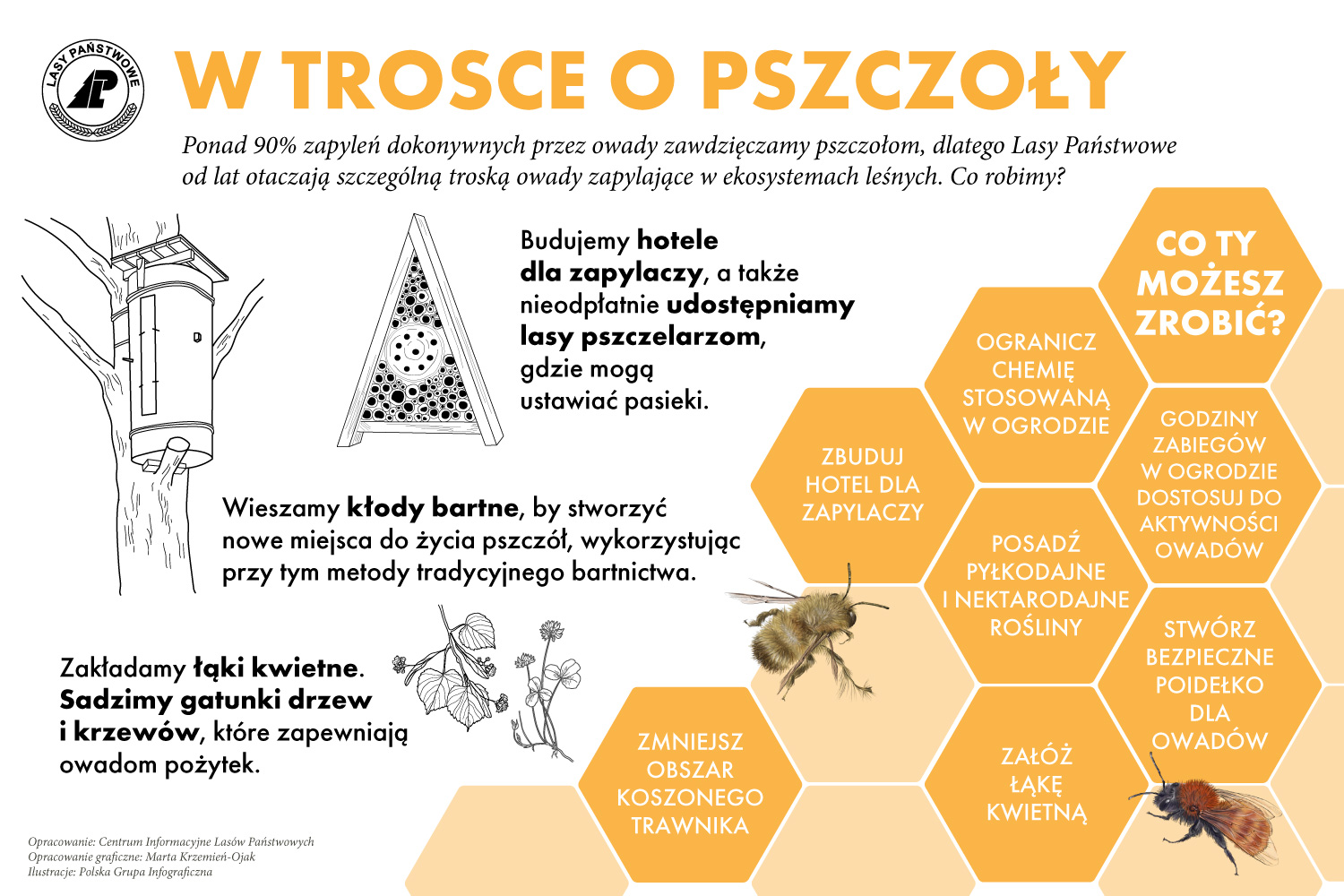Bees are animals without which the world would not exist. They are the ones that pollinate the plants so that we have access to food. Bees are very hard-working insects. Learn more about bees and the fascinating secrets that are hidden in the hive.

The queen in the hive
The bee that lays fertilised eggs is called the queen. We are used to referring to her as ‘mother’. Which version is closer to the truth? If we take the first option, she would be the busiest queen in the world, with absolutely no time to enjoy her royal privileges. Not only does she not enjoy special privileges, but she actually has to meet exacting expectations herself. If her actions do not satisfy her daughters, they will unscrupulously exchange her for another.
Why is the queen so different from the worker bees?
Female bees develop from fertilised and males from unfertilised eggs. So while drones are different from their sisters right from the start, workers, and queens are identical. What, then, determines that one in tens of thousands of bees retains reproductive capacity and fills the hive with their genes? Mothers are fed royal jelly for longer than other larvae.
This royal jelly is secreted by the throat glands of the queen workers from about day 6 of their lives. The queen larvae, on the other hand, receive royal jelly until the 9th day of development, when the matrix is sealed and pupation begins.
Why is this so important? It is the type of food that determines the form in which the female larva will pupate. Only constant access to royal jelly stimulates the development of the ovaries in the mother and stimulates the formation of the structures responsible for her fertility.
Apart from the structure of the reproductive organs, the queen differs from the worker bees in a number of other characteristics. She is the only one who does not die after stinging an opponent, but this opponent is usually another queen bee, a competitor that has been stung at the same time.
In addition, the queen bee secretes different hormones from the worker bees. The most important of these is ectohormone, the maternal substance. Ectohormone binds the colony together – it cools down swarming moods, blocks the development of worker ovaries, increases wax production, and inhibits the construction of new combs. If for some reason the bees do not get their dose of ectohormone on time, they become restless and recognise that they have been orphaned. Then, they start to raise a new queen.
There is only one queen
Even a bee colony of 80,000 has only one queen bee. The queen does not work, but she has her own responsible task: she takes a mating flight and then lays eggs – up to 2,000 a day! She is superbly nourished by royal jelly and can thus live for five years. However, she is not completely unthreatened: if something happens to her and she cannot lay eggs, the bee workers will get rid of her without mercy, and from among the larvae, they will select one to be fed with royal jelly so that she grows up to be the new queen. She will prepare for this role in a special cell called a queen cell.
The bees are infinitely attached to their queen, giving her great respect and loyalty; when a stranger appears in the hive, they attack and kill her. The good condition and genes of the queen mainly determine the strength and productivity of the colony.

